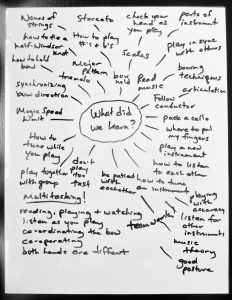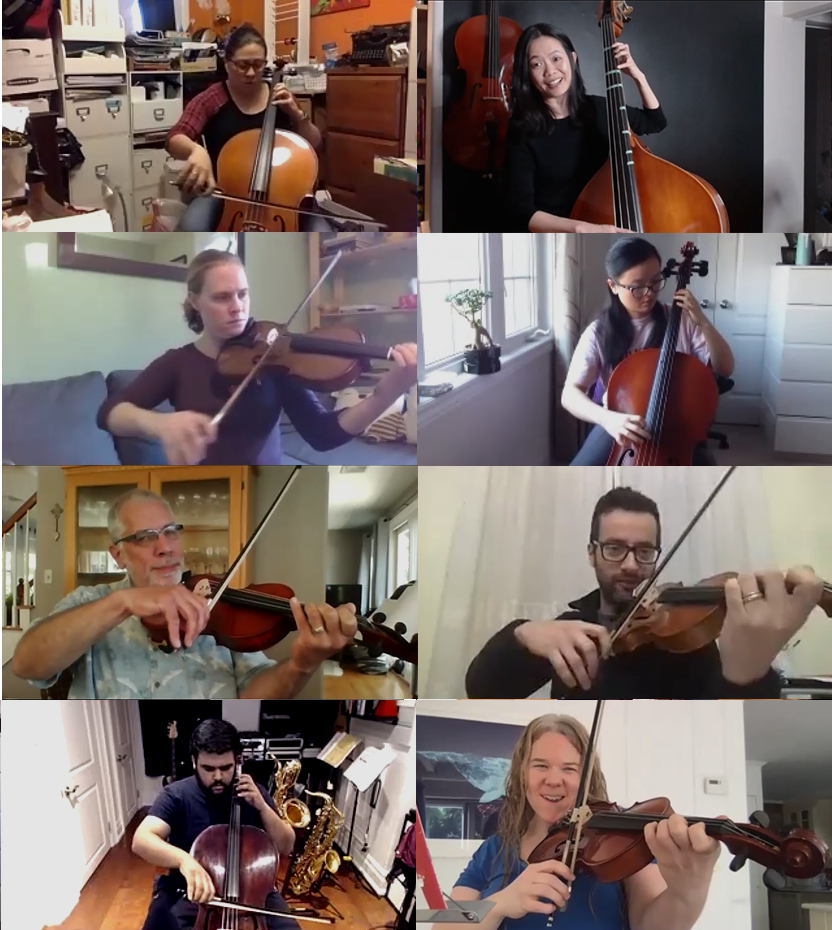When people, as they often do, ask music teachers about how learning music benefits students, it is sometimes difficult to articulate. I often find myself tongue-tied because of the sheer magnitude of the subject. There are so many aspects to music education, that to boil it all down to a quick, precise, and impactful answer is challenging, especially when you are put on the spot.
Is music really just a frill?
To many people, it might seem like music students only learn to play a few new pieces and have fun in the process. When put that way, it doesn’t seem like they accomplished much compared to other more traditionally-valued subjects like math or science, does it? It does seem, as many put it, like a ‘frill.’
A great follow-up activity after a concert.
Back in December, as an experiment and as a great follow-up after the success of the Winter Concert, I tried a new activity with my beginner Grade 9 classes.
I passed out some scrap paper, and asked every student to reflect on and write down 10 things they learned in string class since September. Afterwards, they shared their reflections with the class. The results surprised even me.
Here is the result of the Grade 9 Beginner Strings brainstorm:
Music involves the entire brain.
Some of these skills are not unique to music, of course. But what is unique is that teaching music incorporates all of them at the same time – it involves the entire brain. In other words, music is wholistic learning at its best.
I highly recommend doing this activity occasionally with your students to help them to realize the many, many things they are actually learning in music class!
To further illustrate how playing music benefits your brain, TEDTalks has a great video:
So, what are students learning?
Students are learning how to take risks and persevere. They are learning how well their brain can multitask. They are learning to listen and find balance with others. They are learning to be a productive member of a group. They are learning to work with others. They are learning to problem-solve. They are learning discipline, patience and tolerance. They are learning to perform in front of others. They are also using many parts of the brain at the same time to coordinate many different physical, aural and visual processes, much of which require split-second decisions and minute fine-motor skills. Most importantly, they are forming relationships and a community. That’s pretty incredible for just four months, I think!
Music education is a necessity.
Teaching and learning music involves an ecosystem of skills in which every part and contribution is necessary for a successful outcome. As much as our society idolizes subjects like math, science and language because of their obvious direct applications to material benefits, music involves much, much more than just the math and language centres of the brain. When you recognize this, one must ask, how is it that music is deemed a frill rather than a necessity?
Enable your students to articulate what they have been learning.
The brainstorming chart is a great activity to do with your class, not only so they can see for themselves and articulate to others how much they have been learning, but it’s a great boost as a music teacher when you see for yourself what you’ve been teaching them. It’s nice to have occasional reminders about the amazing job we do each day.
The short answer….
As we can see, there is no short answer to the benefits of music education. Learning music involves many complex skills and trying to sum it up into a nice and neat answer cannot do it justice.
So, next time someone asks you how students benefit from taking music, direct them to this post or to one of your students!




Rebecca Lane
Great article!
SmartMusicTeacher
Thanks!